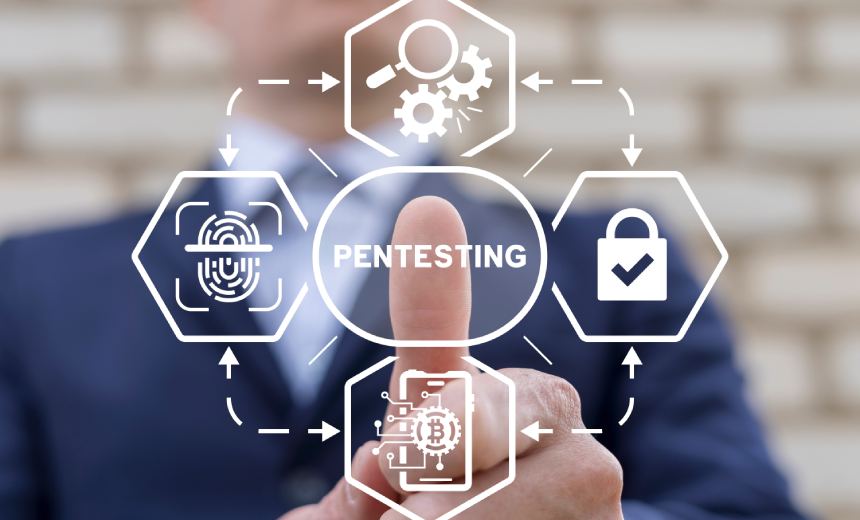Artificial Intelligence & Machine Learning
,
Governance & Risk Management
,
Next-Generation Technologies & Secure Development
Pentesting Tools Uncover Vulnerabilities but White Hat Skills Are Still in Demand

Not long ago, vulnerability management followed a predictable rhythm: quarterly scans, annual penetration tests and long remediation cycles. White hat hackers – ethical professionals who mimic attackers with permission – were central to that process. Their job is to think creatively, exploit weaknesses and help security teams patch the holes before any malicious actor found them.
See Also: Fighting Deepfakes: Transformative Approaches to Protect Your Business
Today, that rhythm has been disrupted. Automated pentesting platforms have introduced continuous, machine-driven testing that scales far beyond what humans alone can achieve. These tools run on schedules measured in hours, not months, and they feed directly into ticketing systems that drive remediation. The result is faster visibility and robust integration with daily security operations.
But fear not! Automation doesn’t eliminate the need for humans. Instead, it raises the baseline and changes what white hat hackers need to know to stay relevant.
A Technical Look at Automated Pentesting
To appreciate how careers are shifting, it helps to how automated pentests works. At their core, these systems combine scanning engines with controlled exploit modules, and they are driven by an automation engine that schedules, sequences and integrates the steps into a repeatable workflow. Instead of a one-time engagement, the process runs continuously, feeding results into vulnerability management tools and development pipelines. The basic steps include:
- Surface discovery and mapping: The system starts identifying assets including domains, subdomains, cloud services, open ports and APIs, using passive intelligence and active probes. This gives an up-to-date map of the attack surface.
- Fingerprinting and targeted scanning: Next, it fingerprints services and software versions and then applies vulnerability checks against databases including CVE and vendor advisories. Web applications are automatically crawled to map endpoints and then fuzzed with varied inputs to uncover vulnerabilities.
- Exploitation and validation: Unlike traditional scanners that stop at “potential vulnerability,” automated pentests often attempt safe exploits. They validate whether a flaw is real, sometimes chaining multiple issues into an attack path.
- Prioritization: Findings are ranked by severity and likelihood of exploitation, often combining CVSS scores with exploitability data and business context. This reduces noise and ensures remediation focuses on high-impact risks.
- Integration into workflows: Results don’t sit in a report on a shelf. They flow directly into Jira, ServiceNow or CI/CD pipelines, enabling teams to fix and retest quickly.
These steps ensure vulnerabilities are identified and validated continuously, not just during scheduled assessments – transforming the static vulnerability management process into a dynamic feedback loop.
Why White Hat Hackers Still Matter
Automation and artificial intelligence tools are sometimes viewed as a threat to job security, but in practice, they change the work rather than replace it. These tools bring speed and scale but they cannot replicate creativity. White hat hackers provide the kind of insight that only human judgment can deliver.
Automated systems may uncover isolated weaknesses, but they often miss the subtle combinations of vulnerabilities that, when chained together, create much greater impact. Human penetration testers can spot these connections and exploit them in ways that demonstrate real-world risk. Machines also struggle with business logic flaws, where an application behaves in ways that defy its intended purpose. Humans test systems in context, probing workflows and decision paths to see how they could be manipulated.
Adversarial thinking cannot be automated. Attackers may not follow predictable patterns. They invent new approaches. White hat hackers mirror that creativity, adapting and improvising in ways machines cannot. There is also the human skill of communication. Ethical hackers translate technical findings into terms that business leaders understand, helping organizations make informed decisions about risk.
Far from being pushed aside, white hat hackers are being elevated. Their work is moving away from repetitive scanning toward deeper analysis, critical validation and strategic advisory roles that shape how organizations approach security.
Skills White Hat Hackers Will Need
For anyone entering or advancing in this field, automation reshapes the skill profile. Employers will expect you to:
- Be tool-fluent: Understand how automated pentesting platforms operate, how results are generated and how they integrate into vulnerability management programs.
- Apply analytical rigor: Move beyond running tools to interpreting results, prioritizing remediation and spotting false positives.
- Stay creative: Develop the ability to find what tools cannot – logic flaws, chained exploits and contextual risks.
- Communicate clearly: Articulate why a vulnerability matters, not just that it exists, in terms that executives and developers can act on.
- Keep learning: The tools will evolve, and so must you. Continuous professional development is not optional.
For early-career professionals, this means automation is not a threat but a baseline. Mastering the tools gets you in the door. Demonstrating creativity and communication skills helps you advance.
As automated pentesting becomes more widespread, white hat hackers won’t vanish. Instead, they will become more strategic, partnering with automation rather than competing with it. The future of vulnerability management lies in this partnership: Machines deliver scale and speed, while humans bring ingenuity and judgment.
For anyone considering this career path, the message is clear: Automation is your ally, not your adversary. Learn the tools, cultivate creativity and position yourself as the bridge between machine speed and human insight. That combination will define the next generation of white hat hackers.
